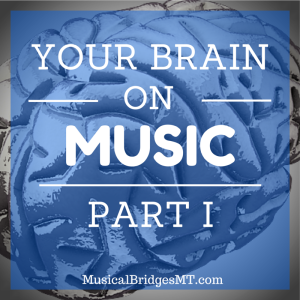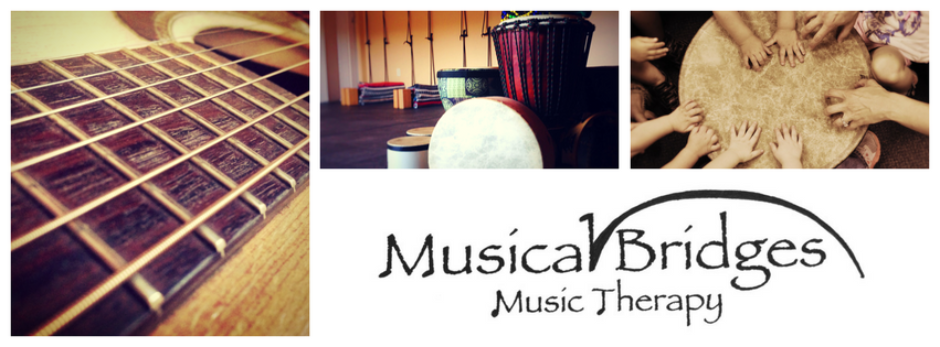 The human brain is the most complex organ in the body and is responsible for deciphering all of the stimuli we encounter on a daily basis. One of the most common stimuli we encounter every day, throughout the day, is music. Did you know that every time you encounter music your entire brain is effected? Even if you are unconscious! This in turn creates emotional and physical responses in our bodies that sometimes we cannot control due to music’s tremendous influence on the brain.
The human brain is the most complex organ in the body and is responsible for deciphering all of the stimuli we encounter on a daily basis. One of the most common stimuli we encounter every day, throughout the day, is music. Did you know that every time you encounter music your entire brain is effected? Even if you are unconscious! This in turn creates emotional and physical responses in our bodies that sometimes we cannot control due to music’s tremendous influence on the brain.
So here are the facts….
1. Music is a WHOLE BRAIN process. In order to decipher music the brain has to decode pitch, location (where the sound is coming from), timbre, duration, loudness (to name a few) all of which are processed in different areas of the cerebral cortex which spans both hemispheres of the brain. When considering music as a “whole brain” process one must realize music is processed in the left and right hemispheres of the brain (Bever, 1988; Taylor, 1988). A person suffering a left hemisphere brain injury can often sing but struggles with speech (Gabby Gifford is an example of this) due to the fact that expressive rhythmic and melodic behavior (singing) is processed in the right hemisphere (Hodges, 1996).
2. Music affects important chemical levels in the brain (Carlson, 1992). Dopamine, Serotonin, Epinephrine… all important in emotional regulation and all can be affected by music. This is due to music’s effect on areas of the brain connected to emotional responses such as the amygdala, cingulate gyrus and hypothalamus (Taylor, 1997). Wouldn’t you rather use music to help boost serotonin and treat your depression than Zoloft which can create even worse side effects than depression itself? Increase levels of dopamine by relaxing to music and decreasing pain perception? Music can also decrease levels of epinephrine which plays a role in anxiety. Use the correct music at the correct time and you can forget about the Xanax.
3. Music strongly affects our memories. Ever been reintroduced to a song that you haven’t heard in years, to find yourself singing majority of the words. You are left wondering… how in the world did I remember that? This is because all over your brain little bits of music have been stored. A person with dementia often can sing along to songs from their youth or play musical instruments even in the presence of severe cognitive impairment (Hodges, 1996). It has also been found that with dementia, singing persisted after speech was severely disturbed and song production (humming) was possible even when the words could no longer be sung (Johnson & Ulatowska 1995). Ever wonder why we sing the ABCs? If one was to recite them without singing, the brain would have to remember 26 individual bits of information. When we put these 26 bits into 4 musical phrases (ABCDEFG, HIJKLMNOP, QRSTUV, WXYZ) our brain interprets this as only 4 bits of information to store. Much easier and more effective on storage space right? This is why young children often learn and retain information better in a musical environment.
4. Music is one of the only stimuli to activate the brain when a person is in a coma (Taylor, 1981; Boyle, 1989; Harvey, 1992). When in a coma the brain is unaware of the senses of sight, touch, taste and smell. However the sense of hearing can be useful. Auditory stimuli stimulate the cerebral cortex which sends messages throughout the body, and when music is involved the cerebral cortex is constantly working to adapt to the musical changes within the song. This being said… a trained board certified music therapist should always be used in treating a coma patient with music as unwanted side effects can occur which cause more harm than good due to this powerful effect music has on the resting and recuperating brain.
So there you have it… the first 4 facts about your brain on music. Stayed tuned next month when we reveal Part II of Your Brain on Music!
References
———————-
Bever, T. G. (1988). A cognitive theory of emotion and aesthetics in music. Psychomusicology, 7, 165-172.
Boyle, M. E. (1989). Comatose and head injured patients: Applications for music in treatment. In M. H. M. Lee (Ed.), Rehabilitation, Music and Human Well-Being (pp. 137-148). SaintLouis, MO: MMB Music, Inc.
Carlson, N. R. (1992). Foundations of Physiological Psychology. Boston: Ally & Bacon.
Harvey, A. W. (1992). On developing a program in musicmedicine: A neurophysicological basis for music as therapy. In R. Spintge & R. Droh (Eds.), Music in Medicine (pp. 71-79). Saint Louis, MO: MMB Music, Inc.
Hodges, D. (1996). Neuromusical research: a review of the literature. In Handbook of Music Psychology, ed. D Hodges. San Antonio: IMR Press.
Johnson, J., & H. Ulatowska (1995). The nature of the tune and text in the production of songs. In MusicMedicine 2, ed. R. Pratt & R. Spintge. St Louis: MMB Music. In Press.
Taylor, D. B. (1981). Music in general hospital treatment from 1900-1950. Journal of Music Therapy, 18, 62-73.
Taylor, D. B. (1988). Therapeutic musicians or musical physicians: The future is at stake. Music Therapy Perspectives, 5, 86-93.
Taylor, D. B. (1997). Biomedical Foundations of Music as Therapy. Saint Louis, MO: MMB Music, Inc.

Pingback: socialeum.com
Pingback: 8 Reasons Why You Should Sing Every Day | How Has Music Helped You Today?
Pingback: Your Brain on Music Part 2: Autism, Music and the Brain | How Has Music Helped You Today?
Pingback: Holding onto the Music: 5 Ways #MusicTherapy Aids with #Alzheimer’s Disease | How Has Music Helped You Today?